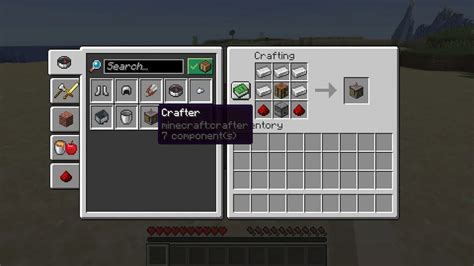Auto Crafter Recipes: A Guide to Automation in Crafting
Auto crafters are a game-changer for players looking to streamline their crafting processes and boost efficiency. Whether you're focused on gathering resources or creating high-demand items, understanding auto crafter recipes is crucial for maximizing your in-game productivity. This comprehensive guide explores different aspects of auto crafter recipes, helping you optimize your crafting experience.
Understanding Auto Crafter Mechanics
Before diving into specific recipes, it's vital to grasp how auto crafters function. Auto crafters automate repetitive crafting tasks, freeing you to focus on other activities. They typically require a set of inputs (raw materials) and produce a specific output (crafted item). The recipes themselves dictate the input-output ratio and the crafting time. Understanding this ratio is key to efficient resource management and avoiding bottlenecks.
Key Aspects of Auto Crafter Recipes
- Input Materials: The raw materials needed for the crafting process. Make sure you always have sufficient quantities of these inputs. Stockpiling is recommended for uninterrupted production.
- Output Items: The finished product created by the auto crafter.
- Crafting Time: The duration it takes to craft one unit of the output item. This time varies based on the recipe's complexity.
- Recipe Complexity: More complex recipes require more inputs and have longer crafting times.
- Efficiency: Optimize your recipes to minimize wasted resources and maximize output.
Common Auto Crafter Recipes and Strategies
The specific recipes available will depend on the game you're playing. However, we can discuss general strategies applicable across many crafting systems:
Optimizing Resource Management
Effective resource management is key to successful auto crafting. Consider these points:
- Inventory Management: Regularly check your inventory for low input materials. Implement a system to automatically replenish these resources.
- Production Chains: Design your crafting processes to create a chain reaction, where the output of one recipe becomes the input of another. This creates a continuous flow of production.
- Prioritization: Prioritize crafting recipes based on their demand and importance to your overall goals.
Example Recipe Categories and Strategies (Generic):
- Basic Resources: Focus on efficient gathering and processing of fundamental resources like wood, stone, and ores. These serve as the foundation for more complex items.
- Intermediate Goods: Craft intermediate items that serve as building blocks for more advanced products. Examples include planks, ingots, and textiles.
- End-Game Items: Use auto crafters to produce high-demand, end-game items like weapons, armor, or complex machinery.
Advanced Auto Crafter Techniques
For more experienced players, consider these advanced techniques to further optimize your crafting:
- Modular Design: Create modular auto crafter setups that are easily scalable and adaptable to changing needs.
- Parallel Processing: Employ multiple auto crafters simultaneously to produce multiple items at once.
- Automated Delivery Systems: Implement systems that automatically transport resources to and from your auto crafters.
Conclusion: Mastering Auto Crafter Recipes for Maximum Efficiency
Mastering auto crafter recipes is a journey that requires understanding both the mechanics of your chosen game's system and the principles of efficient resource management. By applying the strategies outlined in this guide, you'll transform your crafting process, leading to increased production, reduced downtime, and a more enjoyable gaming experience. Remember to constantly experiment and refine your techniques to find the optimal setup for your needs.
